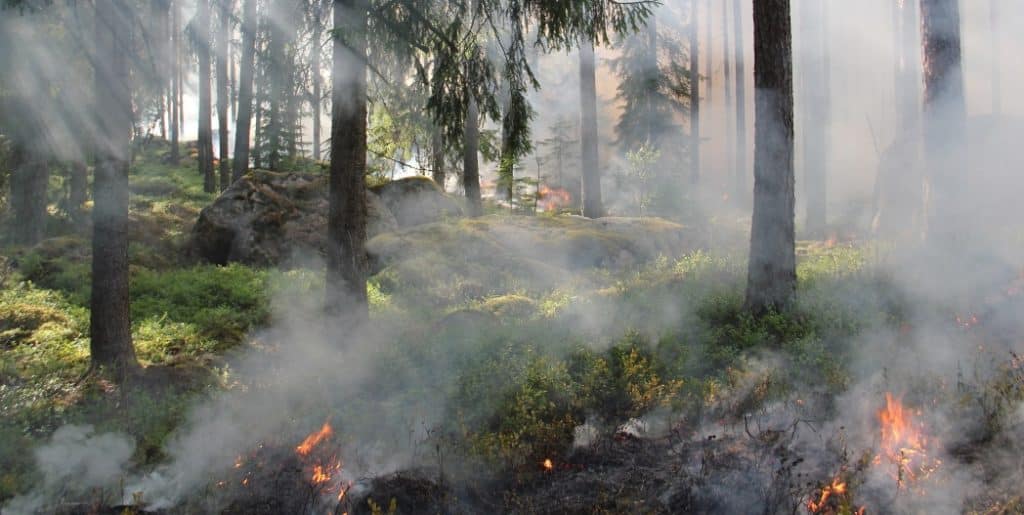
As the frequency and intensity of wildfires increases due to several factors, like past fire suppression, climate, and weather, it is important to consider how to prepare the area surrounding your home, or other defensible structures, on your property. With many homes in the Pacific Northwest either surrounded by forestland or at the wildland-urban interface, considering how to create defensible space is an important strategy to mitigate possible damage to structures if a wildfire occurs in the area.
Peninsula Environmental works with land owners of all sizes in preparing and executing Wildfire Mitigation Plans. Defensible spacing, proper tree and shrub pruning, forest thinning, plant pest & disease management, sustainable landscaping and home/hardscape management are some of the strategies we implement in our wildfire mitigation plans.
Defensible space is a zone around a home or structure where plants or trees are altered to reduce wildfire and rural fire risk. Defensible space mitigates home loss via reduction in radiative heating, reducing chances of ignitions from ember wash, decreasing direct contact with flames and opening safe space for wildland and urban firefighters to combat fire (Gill and Stephens, 2009; Cheney et al., 2001).
Many counties have Community Wildfire Protection Plans in place; one example is Clallam County. They have suggested criteria for defensible space surrounding your home and other mitigation strategies. Common mitigation strategies include: stand thinning, pruning of trees and thinning from below (reducing dead, suppressed, diseased trees), reduction of diseased stands, creating fuel breaks, and using fire resistant plantings.
We recommend not directly following community wildfire plans, as they are normally written on a community scale and may not correctly identify opportunity for wildland fire mitigation and wildlife risk on your individual property. A site-specific evaluation of natural resources and your structures are necessary for actionable direction on wildfire mitigation.
Many Community Wildfire Protection Plans use the Firewise landscaping zones, with a 30 foot fuel free area surrounding structures, 30-60 foot zone of minimum fuel area, 60-90 foot zone of reduced vegetation, and 90+ feet from structure natural areas thinned and selectively pruned. In the Pacific Northwest region, most scientific evidence demonstrates the most effective distances with reduced vegetation from the structure vicinity were anywhere from 16-58 foot (Syphard et al., 2014). In this study, the most effective actions were reducing vegetative cover up to 40% immediately adjacent to structures and making sure that vegetation does not come into contact with protected structures.
References
Cheney P, Gould J, McCaw L (2001) The dead-man zone – a neglected area of firefighter safety. Australian Forestry 64, 45–50.
McDonald, S. and Barry, D. (2009). Clallam County Community Wildfire Protection Plan.
Gill AM, Stephens SL (2009) Scientific and social challenges for the management of fire-prone wildland–urban interfaces. Environmental Research Letters 4, 034014.
Syphard, A. D., Brennan, T. J., & Keeley, J. E. (2014). The role of defensible space for residential structure protection during wildfires. International Journal of Wildland Fire, 23(8), 1165-1175.